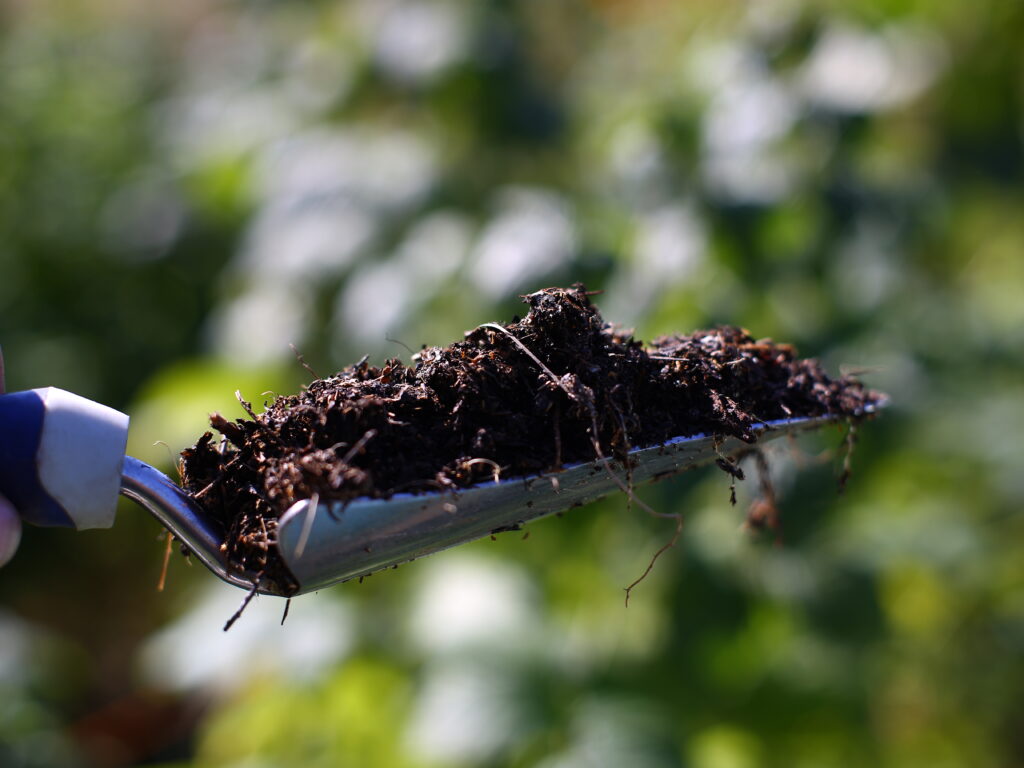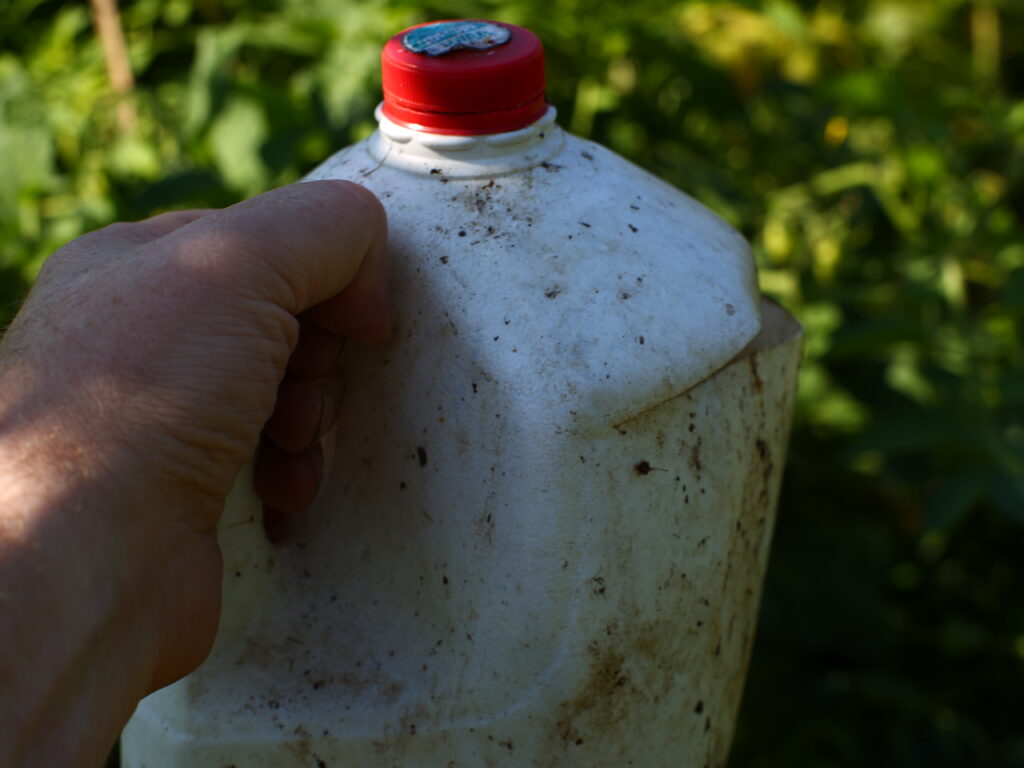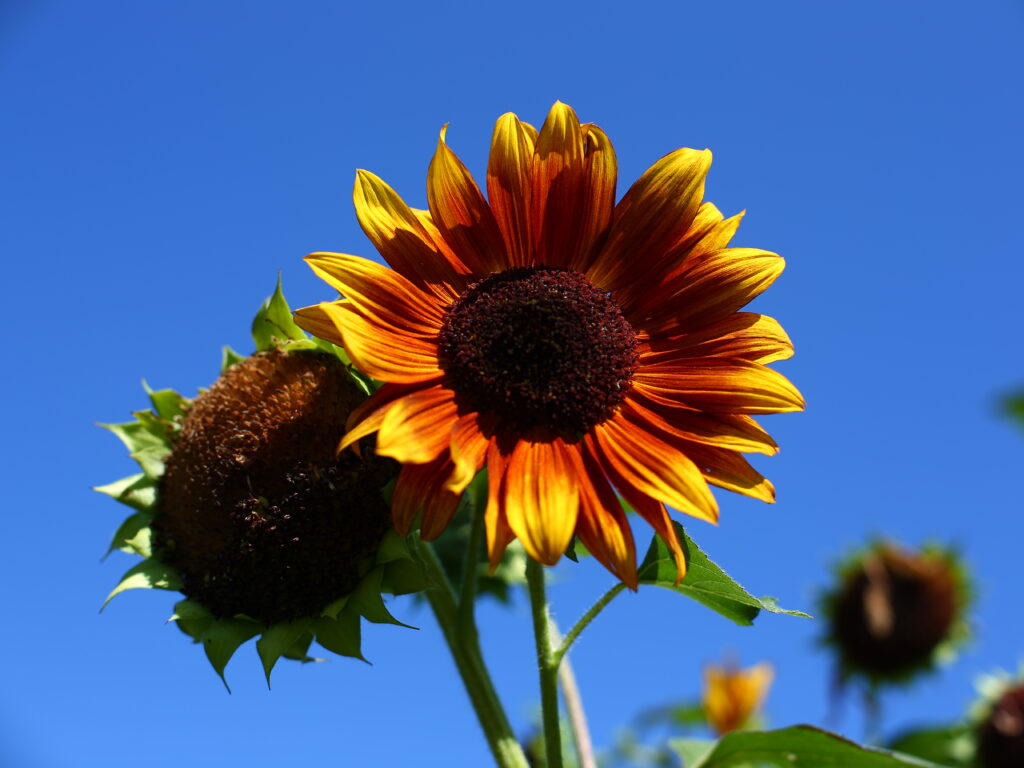By Blaz Fremont
As if we needed any further reason to coax edible plants from Gaia, any reason more than exploding food inflation, our shrinking digital pellets, surrealist supply chains of melting toffee, and increasingly toxic shiny packets mislabeled as food in the fantastic fake emporiums of not-food. I offer you a humble recipe for making garden fertilizer “tea” from common ingredients readily found in our island home.
Why Fertilize?
The philosophy of fertilization is as incontrovertible as falling in love, as obvious as the limitless desire spawned from the solitary confinement of our materialist monism, and as ineluctable as the yawning maw of hunger that feeds the virtual void eating us all alive.
We know spending invented tokens of no inherent value conjured into existence by mind-virus technicians serving pathocratic thugs does not guarantee us a place in the sacred circle. The opening of the mystery starts with coveting the worthless, foraging decay, and getting up to your armpits in the stink of death. OK, maybe not your armpits. Shall we settle for elbows?
Gathering detritus in the right combinations and applying them to our garden serves life, brings us closer to the next feast day, and gives us more of a right to take life and devour it. And mucking in with excrement and seaweed is just a jolly good time for those with an eye on transcendence. With the average age of islanders at 55 years, this means most of us.

Island Garden “Tea”
Fertilizer “tea” used in the warmer half of the year is a partly fermented fusion of seaweed and animal manure, with a moderate nitrogen profile. Cow, deer, sheep, or horse are best, as they tend not to burn the leaves of food plants, which may be indicated, depending on the plant, by very deep green leaves with dry brown tips fringed with yellow.
To gather your manure, dig down into a pile of it and look for a layer of well composted manure, which will present as a thick black seam with a texture of crumbly fudge several inches wide, about a foot or more from the surface. Combine the manure with partially rotted seaweed for trace elements. A gallon milk jug with the top few inches cut off works well. This makes it easy to add the manure and seaweed into the container and to stir the mixture with a stick. Take 2 cups of horse manure and 1 cup of seaweed and put them into the 1-gallon milk container. Fill the container up with water, stir well, and leave in the shade for 3 days or until foam can be seen on the surface.

Dilute this tea by using a small amount well-mixed into your 2-gallon watering can. For newly planted seedlings or small plants (<12”), use 1 tablespoon of tea per gallon of water. For vigorous larger plants (1-3’), use 2-4 tablespoons of tea per gallon of water. Pour this water and fertilizer mixture around the roots of your plants, about a ¼ cup splash for newly planted seedlings, ½ to 1 cup for larger plants, and a couple of cups for larger more mature food plants (4’-6’). For large mature crops, such as full-grown raspberries, I often dilute the tea 50-50 with water and fertilize 2-3 times per berry season.
Only apply this diluted tea fertilizer to just-watered crops in the late afternoon when direct sunlight is off the plants. In direct sun, any liquid fertilizer or water that spills onto the plant surface can potentially act as a lens that may focus the sun’s rays and burn the plant.
Use the tea every second watering. After about 3-4 weeks or more, your tea smell will change from a horse butt kissed by the sea to something that is more sharp and sour. This stage is often characterized by the vigorous growth of mold or green algae on the surface and inside the tea container. At this point, you can dump your tea into the compost heap and make a fresh batch. Note: If sensitive to mold, use a respirator and disposable gloves.
Observe your plants over the next couple of days after fertilizing. Good signs that the tea is working are more vivid plant color and raised branches as if the leaves are reaching for the sun, with very turgid leaf profiles. Growth should be faster and vegetable/fruit/leaf size should be larger and more vigorous with no or much less disease or insect infestation than before you used the tea. Use your post-fertilizing observations to adjust the quantities of tea to suit your particular plants.
Benefits
You become an agent of regeneration, fueling the fecundity of nature and your own food. You make what you need and eschew participation in the marketplace of theft backed by force. You frolic with death to bring forth life. Amid the confusing clarion calls for human suicide, on the altar of our own anthropogenic hubris, I invite you to refuse to be a species disease. Although we each have become parasitic and wanton, even as we are fed upon by our masters, we do not need to destroy humanity to save the Earth. We can love her, dance with her, and commune with her as we shake the bloated psychopathic ticks from our backs and dance, shout, cry out with the ecstatic howl of ancient beasts. Grrrroooooaaarrghhh!

